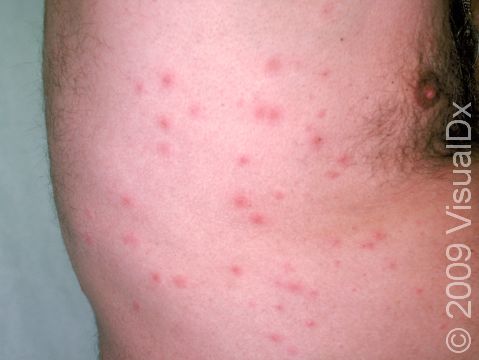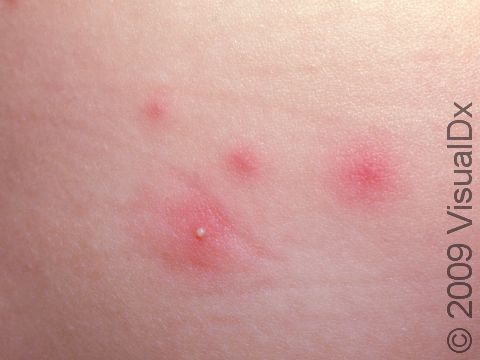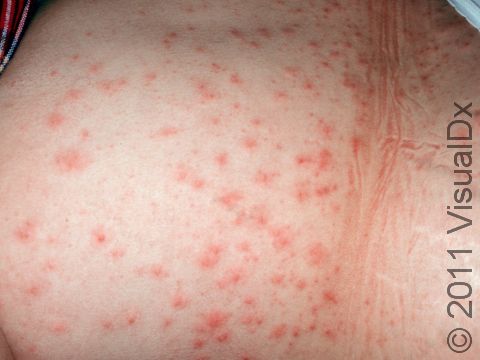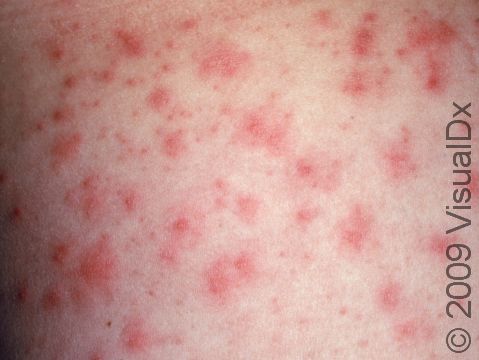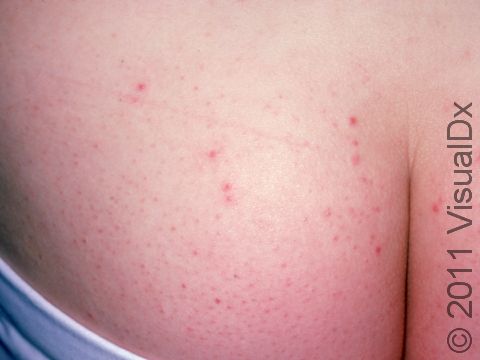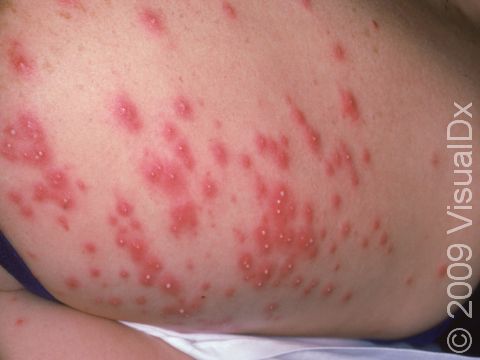Hot Tub Rash (Pseudomonas Folliculitis)
Pseudomonas folliculitis is a type of folliculitis (which literally means “inflammation of the follicle,” or hair shaft) that occurs specifically after exposure to a type of bacterium, called Pseudomonas, that grows in poorly chlorinated hot tubs and/or whirlpools. Thus, this type of folliculitis is often called hot tub rash. The rash can develop anytime from several hours to days after the incident and is most noticeable in areas of the skin that were covered by a bathing suit or clothes at the time of exposure.
Who's At Risk?
Anyone who uses a contaminated hot tub, whirlpool, or swimming pool can develop hot tub rash.
Signs & Symptoms
The most common locations for hot tub rash include:
- Groin and buttocks (“bathing suit” distribution)
- Abdomen or lower back
- Armpits
- Chest or upper back
- Upper arms
- Upper legs
The rash appears as small (2–10 mm) pink to red bumps, which may be filled with pus or covered with a scab. Located around hair follicles, these bumps tend to be itchy or tender.
Hot tub rash typically arises within 1–4 days of exposure to the contaminated source. In addition to the rash, symptoms can include mild fever, headache, sore throat, and fatigue. Swollen and tender lymph nodes (glands that help produce antibodies, special proteins that fight off infection) may occur. Breast tenderness occasionally develops in both men and women, as glands in the nipple may become infected.
Although hot tub rash usually resolves within 7–14 days without treatment, the rash may leave behind patches of darker (hyperpigmented) skin. These patches are more pronounced in darker-skinned people and may take months to return to normal pigmentation.
Self-Care Guidelines
In order to prevent hot tub rash, proper maintenance and chlorination of pools, spas, and hot tubs is essential. Sponges and loofahs should be completely dried between uses in order to kill any bacteria.
If the rash is itchy, an over-the-counter antihistamine may be helpful.
Treatments
Your doctor may wish to obtain a bacterial culture of one of the pus-filled bumps in order to establish the diagnosis.
No special therapy is usually required. However, in severe cases, your physician may recommend the following:
- Acetic acid compresses
- Oral antibiotic pills such as ciprofloxacin
- Topical antibiotic cream such as gentamicin
Visit Urgency
Make an appointment with your doctor if you develop an itchy or tender rash, especially if it is associated with fever, swollen lymph glands, or other symptoms.
Trusted Links
References
Bolognia, Jean L., ed. Dermatology, pp.1132. New York: Mosby, 2003.
Freedberg, Irwin M., ed. Fitzpatrick’s Dermatology in General Medicine. 6th ed, pp.1860-1861, 1901-1902. New York: McGraw-Hill, 2003.
Last modified on August 16th, 2022 at 2:45 pm

Not sure what to look for?
Try our new Rash and Skin Condition Finder
